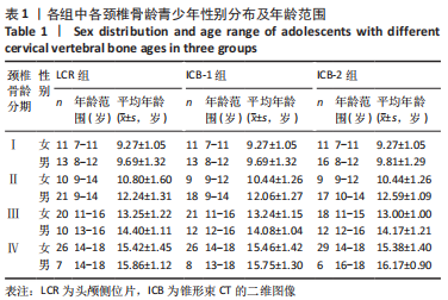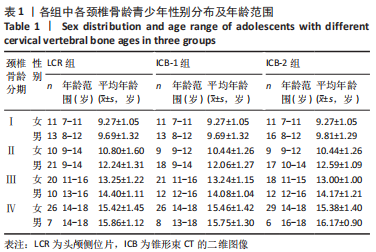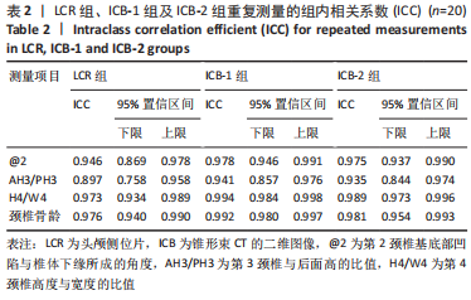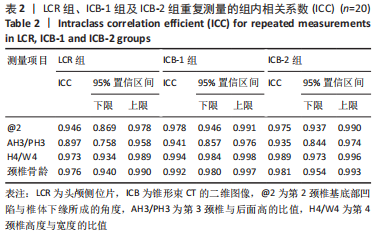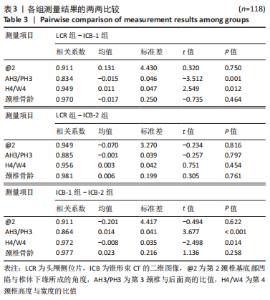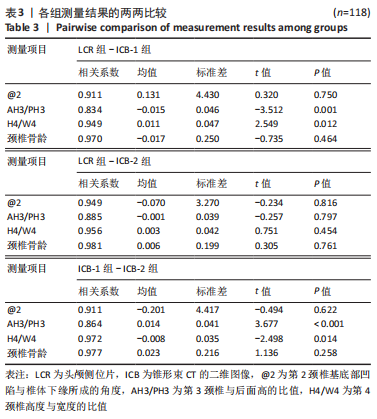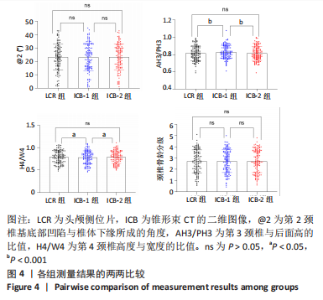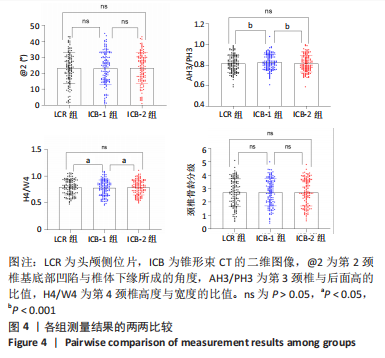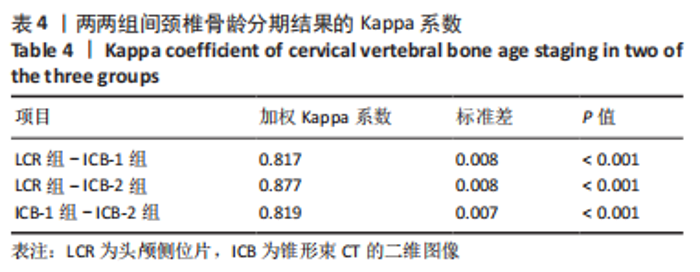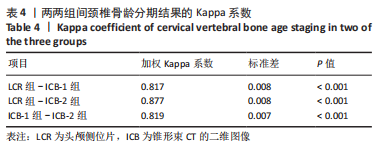[1] 陈莉莉. 骨龄在评估颅面生长发育中的应用及其影响因素[J]. 口腔医学,2016,36(5):385-389.
[2] MAGALHÃES MI, MACHADO V, MASCARENHAS P, et al. Chronological age range estimation of cervical vertebral maturation using Baccetti method: a systematic review and meta-analysis. Eur J Orthod. 2022; 44(5):548-555.
[3] MCNAMARA JJA, FRANCHI L. The cervical vertebral maturation method: A user’s guide. The Angle orthodontist. 2018;88(2):133-143.
[4] 占梦军, 张世杰, 陈虎, 等. 骨龄自动化评估的研究进展[J]. 法医学杂志,2020,36(2):249-255.
[5] CHEN L, XU T, JIANG J, et al. Quantitative cervical vertebral maturation assessment in adolescents with normal occlusion: A mixed longitudinal study. Am J Orthod Dentofacial Orthop. 2008;134(6):720-721.
[6] CHEN L, LIU J, XU T, et al. Quantitative skeletal evaluation based on cervical vertebral maturation: a longitudinal study of adolescents with normal occlusion. Int J Oral Maxillofac Surg. 2010;39(7):653-659.
[7] 李陆玥, 林久祥, 陈莉莉. 正常牙合青少年颈椎骨龄定量分析法(QCVM)的准确性和重复性探讨[J]. 口腔医学,2013,33(4):261-264.
[8] KAASALAINEN T, EKHOLM M, SIISKONEN T, et al. Dental cone beam CT: An updated review. Phys Med. 2021;88:193-217.
[9] 白丁,赵志河. 口腔正畸策略、控制与技巧[M]. 北京:人民卫生出版社, 2015.
[10] JOSHI V, YAMAGUCHI T, MATSUDA Y, et al. Skeletal maturity assessment with the use of cone-beam computerized tomography. Oral Surg Oral Med Oral Pathol Oral Radiol. 2012;113(6):841-849.
[11] NALCACI R, OZTURK F, SOKUCU O. A comparison of two-dimensional radiography and three-dimensional computed tomography in angular cephalometric measurements. Dentomaxillofac Radiol. 2010;39(2): 100-106.
[12] 赵桢祺, 谢理哲, 李琥, 等. 基于锥形束CT的颈椎骨龄评价方法的研究进展[J]. 口腔生物医学,2018,9(1):49-52.
[13] MEHTA S, DRESNER R, GANDHI V, et al. Effect of positional errors on the accuracy of cervical vertebrae maturation assessment using CBCT and lateral cephalograms. J World Fed Orthod. 2020;9(4):146-154.
[14] HAYASHI T, ARAI Y, CHIKUI T, et al. Clinical guidelines for dental cone-beam computed tomography. Oral Radiol. 2018;34(2):89-104.
[15] BONFIM MAE, COSTA ALF, FUZIY A, et al. Cervical vertebrae maturation index estimates on cone beam CT: 3D reconstructions vs sagittal sections. Dentomaxillofac Radiol. 2016;45(1):20150162.
[16] SHIM JJ, HEO G, LAGRAVÈRE MO. Assessment of skeletal maturation based on cervical vertebrae in CBCT. Int Orthod. 2012;10(4):351-362.
[17] NESTMAN TS, MARSHALL SD, QIAN F, et al. Cervical vertebrae maturation method morphologic criteria: poor reproducibility. Am J Orthod Dentofacial Orthop. 2011;140(2):182-188.
[18] GABRIEL DB, SOUTHARD KA, QIAN F, et al. Cervical vertebrae maturation method: Poor reproducibility. Am J Orthod Dentofacial Orthop. 2009;136(4):471-478.
[19] PERINETTI G, BIANCHET A, FRANCHI L, et al. Cervical vertebral maturation: An objective and transparent code staging system applied to a 6-year longitudinal investigation. Am J Orthod Dentofacial Orthop. 2017;151(5):898-906.
[20] PASCIUTI E, FRANCHI L, BACCETTI T, et al. Comparison of three methods to assess individual skeletal maturity. J Orofac Orthop. 2013;74(5): 397-408.
[21] 廖文, 王军, 李宇, 等. 智慧口腔正畸——口腔正畸诊疗体系的新发展方向[J]. 实用口腔医学杂志,2022,38(6):698-701.
[22] 李娟, 包雷, 周建峰, 等. 一种颈椎骨龄的判断方法[P]. 中国专利: 2021.10.29.
[23] 蒋福林, 苏崇莹, 李娟. 正畸智能化诊断系统的研发以及当前进展[J]. 现代口腔医学杂志,2022,36(6):365-370.
[24] 马晓晴, 赵宁, 董晛, 等. 2种锥形束CT转化头颅侧位片的定点一致性探讨[J]. 上海口腔医学,2021,30(5):522-525.
[25] 马晓晴, 张玲, 陆婉, 等. 锥形束CT体素重叠对二维头影测量纵向研究准确性的影响[J]. 口腔医学,2022,42(7):627-630.
[26] BOREADIS AG, GERSHON-COHEN J. Luschka joints of the cervical spine. Radiology. 1956;66(2):181-187.
[27] RAVEENDRANATH V, KAVITHA T, UMAMAGESWARI A. Morphometry of the Uncinate Process, Vertebral Body, and Lamina of the C3-7 Vertebrae Relevant to Cervical Spine Surgery. Neurospine. 2019; 16(4):748-755.
[28] 王星. 颈椎钩椎关节的基础与临床应用解剖学研究[D]. 北京:北京中医药大学,2021.
[29] HARTMAN J. Anatomy and clinical significance of the uncinate process and uncovertebral joint: A comprehensive review. Clin Anat. 2014;27(3):431-440.
[30] CHEN H, ZHONG J, TAN J, et al. Sagittal geometry of the middle and lower cervical endplates. Eur Spine J. 2013;22(7):1570-1575.
[31] LOU J, LIU H, RONG X, et al. Geometry of inferior endplates of the cervical spine. Clin Neurol Neurosurg. 2016;142:132-136. |
